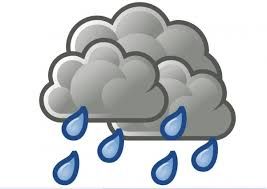Acceptable level of TDS for Raw Water
Published on by Wajahat Akhtar in Academic
What is the acceptable level of TDS for raw water?
Taxonomy
- Standards & Quality
- Quality
- Water Quality
- Quality Maintenance
- Water Quality Management
- Total Dissolved Solids (TDS)
14 Answers
-
HELLO,
RAIN IS FORMED IN 7 PHASES, NOT 3.
New alternative discovery, incredible to realize that we have missed out for centuries, never heard
-https: //pdf.lu/lsu5/details in one page (EN.FR).
"lightning + thunder + rain = a single operation" You will find most of what I advance as hypothesis in this message.HOW THEN ?
1- EVAPORATION
2- DECOMPOSITION of water vapor by photolysis (UVC: ultraviolet ray type C)
- http: //www.u-helmich.de/bio/lexikon/P/photolyse-wasser.html
- http: //biologiedelapeau.fr/spip.php word162?
- www.google.dz / search? Q = photolysis
hv + H2O → ↖H2 + O↗
↖H2 (2/29 = 0.068) and
O↗ (16/29 = 0.551),
All 2 lighter than air, they escape at altitude, the lightest will be the highest.3- COMPRESSION (ascending and descending air currents - Opposition of 2 mechanical forces).
4- IONIZATION under the effect of solar radiation, agitation and friction due to compression (all ionizing agents).
H2 → (2H+) + 2é- (called positive cloud) and
O + 2 - (called negative cloud).5 - EXPLOSIVE SYNTHESIS
(O + 2é-) + 2H+ → H2O + lightning + thunder (the cloud is born, it is only here that we can speak of condensation).
6- CONDENSATION

7- RAIN.
The enigma flash + thunder-cloud-rain is solved.
Algeria-Saida-Hounet
Tel-mob: (213) 790728135
horrimok@yahoo.fr- If rainwater was formed as we all learned,
1- it would have rained a lot more during the hot seasons because the evaporation is more important than during the cold seasons.
2- A dense and permanent fog from the ground to the height of the current clouds would have formed. If you say that water in the gaseous state is invisible, I would say that its decomposition is even more so (final stage).
3- Why do we expect rain when a thunderstorm is coming (lightning and thunder) if there is not an intimate relationship between lightning, thunder and rain?
1 Comment
-
What does this explanation have to do with acceptable TDS levels???
-
-
Other learned colleagues have commented on this adequately. It really depends on the end use for the "raw" water. If it is for use as potable, 500-600mg/l should be the upper limit (per WHO). Conventional water treatment does not reduce TDS, but likely increases it due to coagulation and chemical addition. So a feed water for potable, would ideally be less than 500. Other industrial process waters or irrigation users may be able to tolerate higher TDS, in fact some halophyte plants can tolerate or even thrive on high TDS water above 100 mg/l.
-
Water with TDS below 100, e.g. rain water or distilled water(TDS0) is not good for consumption being a very good solvent and may lead to heart problems with long term use and defeciency of minerals reaquired in human body
-
TDS should be preferably arroung 150, however athletes with high consumption of water might need 100 in thier drinking water. 150-250 range is good taste and replenishment of minerals. 250-300 is border line but can be conitnued for long time. about 300, especially 500 can cause kidney stones with long term use and as water becomes less solvent. TDS above 700 or 1000 needs RO technology feasible for bringing it down which have various environmental and maintainance issues.
-
The TDS concentration is a secondary drinking water standard and, therefore, is regulated because it is more of an aesthetic rather than a health hazard. An elevated TDS indicates the following:
a)The concentration of the dissolved ions may cause the water to be corrosive, salty or brackish taste, result in scale formation, and interfere and decrease efficiency of hot water heaters; and
b)Many contain elevated levels of ions that are above the Primary or Secondary Drinking Water Standards, such as an elevated level of nitrate, arsenic, aluminum, copper, lead, etc.
-
According to WHO it is 500 ppm if I remember correctly.
Sarfaraz
2 Comments
-
We also adhere to the 500 ppm upper limit. www.adedgetech.com
-
That is for drinking water, not raw water.
-
-
250-500 mg/L for development of the biological(Body) structure. Like important mineral in water
1 Comment
-
Where did you find that information?
-
-
TDS limit for potable water in Chile is 1500 mg/L. This decision is based on WHO standard (no evidence of human effects because its ingestion) and economical consideration. Water tariff determination allows self-financing of utilities operators (investment and operational costs).
There's not an acceptable level for raw water. It depends of its use, as wrote Joseph & others. Regards.
-
There is no such thing as an acceptable TDS for raw water. The question should be what is the acceptable TDS for the end use, e.g. for drinking water, if that is what you are producing, or for cooling water etc.
The WHO Guideline suggestion is 600 mg/l for palatability and water becomes more unpalatable as in approaches and exceeds 1000 mg/L. Any water can be treated to be safe and palatable. For example, sea water starts at about 35,000 -50,000 ppm and the TDS is reduced to perhaps 100 -200 ppm by the desalination process. Specific ions in the TDS might be a concern and those should be limited i the finished drinking water.
-
Depends what your dissolved solids are. Vichy Catalan is one of my favourite bottled mineral waters and has a TDS of around 3000 ppm (1000 ppm sodium), great for after a work out. Borjomi can be as high as 7000 ppm. However, this level of TDS would be unacceptable in most markets, especially markets used to purified products. Cheers!
-
Elevated levels of TDS is not an Indicator of what may be in the water, only what the total aggregate is. Here in Colorado, USA I have a Customer who has a TDS of only 191 mg/L, but has High levels of Arsenic and Uranium. It would be best to determine what is making up your TDS if it is suspected harmful elemental contaminants could be present.
I have had a POU RO system for several years on 200 mg/L TDS, producing 8 mg/L TDS. The water has a crisp after taste. The US EPA Secondary Standards Recommends water with a TDS over 500 mg/L should be on Reverse Osmosis or avoid consumption. Higher levels of TDS tend to leave a bitter or salty taste to water. Remember the TDS stands for Total Dissolved Solids which is organic and inorganic molecules, and are primarily insoluble mineral and metallic salts. Research has indicated high purity water such as RO or Distilled water rehydrates the bodies cells faster than water with higher levels of dissolved solids can.
-
You have to check the national water quality standards in your country, I assume you will find values for drinking water/ potable water quality. In case you mean for raw water to be treated for domestic supply, tds values shall be identified prior to design Of The drinking water treatment plant
-
The is no acceptable limit for TDS in raw water, in coming flow change everyday.
-
Well, the quality of raw water can and will vary, and one should select a closest fit to the target treated water quality to offset treatment costs. For drinking water as an example, the following extract from the World Health Organisation is a useful reference:
"The presence of dissolved solids in water may affect its taste (1). The palatability of drinking- water has been rated by panels of tasters in relation to its TDS level as follows: excellent, less than 300 mg/litre; good, between 300 and 600 mg/litre; fair, between 600 and 900 mg/litre; poor, between 900 and 1200 mg/litre; and unacceptable, greater than 1200 mg/litre (1). Water with extremely low concentrations of TDS may also be unacceptable because of its flat, insipid taste."
So the closer the raw water quality is to this level, the better...
Trust this is of assistance
2 Comments
-
Gary Brown,
Can I have a copy of latest update of WHO reference.
You can send me at Moh_elshoraSharad Kulasharad@yahoo.co.uk
Thanks in advance.
1 Comment reply
-
Hi Mohamed, please confirm your email address
Thanks
Gary
-
-
Mr. Gary Brown had made sensible comments. I support his views.
-